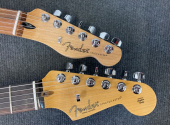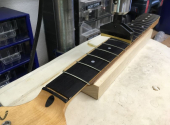Under the Hood #36: A Timeline History of Fender (Part 4)
Over the years, Fender has been growing, building larger factories, acknowledging the contributions of key personnel both from the past and recent years and responding to the new needs of the digital age. Let's take a peek at the modern and contemporary era of Fender to conclude our timeline of one of the world's most essential music brands.
In the late 1980s, Fender began to implement plans to restore the brand's prestige. The new management also responded to the current market needs – as there was no demand for the guitars of the CBS era, the company had to come up with something new, modern and attractive. This was accomplished by introducing the Custom Shop, the American Standard line, production in Mexico and relic guitar finishes.
The 80s
1987: Fender American Standard series
In early 1987, Fender officially launched a new line of models called the American Standard Stratocaster. These guitars had already been produced in 1986 but without an official unveiling. The American Standard was designed to meet the demand for more modern and higher-quality models. Guitars from the CBS era did not sell well while reissue models were more popular.
The American Standard line provided modern features such as a narrower neck, a flatter 9.5 fretboard radius, different frets, a new bridge mounted with two pivots and new pickups. This series has been improved over the years and has become and a classic and a guarantee of quality.
The name American Standard reflects a difficult era when Fender didn't have the manufacturing capacity in the US, but at the same time wanted to meet the demand for American quality. In the first phase of production, the bodies and necks were made in the Japanese Fujigen factory and the rest was finished in the US. And since at least 51% of the guitar was made in the USA, the guitar could even be labelled "Made in USA". So, once again, Japanese manufacturing saved Fender until American manufacturing got on its feet.
1987: Start of production in Mexico
After several years of planning, Fender started production in Mexican Ensenada in 1987. The company had already been manufacturing small accessories in Mexico. The beginnings of Mexican production were entirely under Japanese management, as Fender asked workers from the Fujigen factory to train the staff in Mexico and lay the foundations for the entire production. Initially, the production was small, but later they added amps and, in 1991, guitars. Since then, the importance of Mexican manufacturing for Fender has continued to grow.
1988: First Fender signature model
In 1988, Fender came up with the idea of signature guitars based on famous and influential guitarists. The first such guitar was Eric Clapton's Stratocaster. The model was based on a collaboration between Fender and Clapton. Various specifications that Clapton requested were added to the guitar, including Lace Sensor pickups.
In the same year, another signature model was released – the Yngwie Malmsteen Stratocaster.
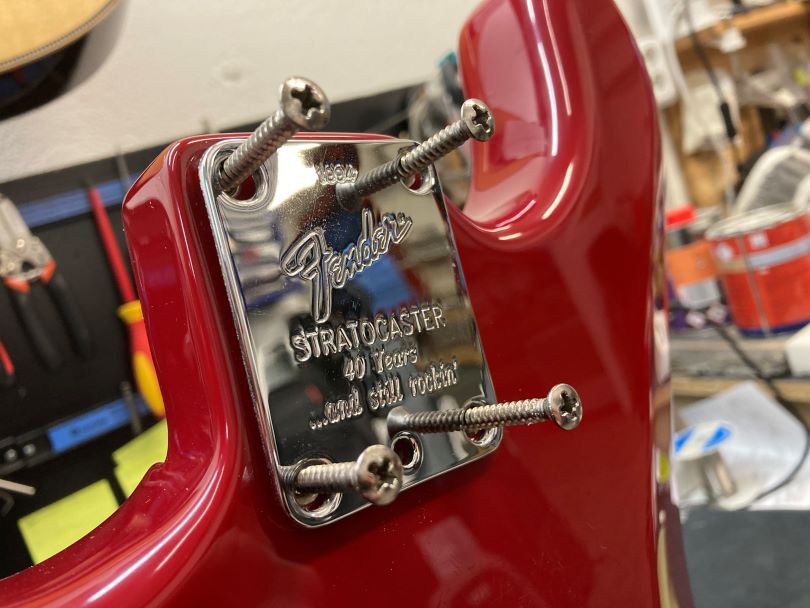
The 90s
1991: Leo Fender died
Leo Fender, the founder of the company, died at the age of eighty-one. His private workshop at G&L has remained largely intact since that day. Leo Fender is renowned as a visionary, an inventor and an honest and tireless worker who largely influenced the world of electric guitars and, through them, modern music itself.
1991: Fender management moved to Arizona
Fender's management relocated from Corona to Arizona, from where it administratively managed the global operations of its company.
1991: Mexican factory took over exports from Japanese factories
The export market was largely taken over by the Mexican factory Ensenada, while the Japanese guitars were now primarily made for the Japanese market and only a small portion of them were exported.
1994: Fire at the Mexican Ensenada factory
In 1994, a fire struck the Mexican factory and the main production had to move to Corona in the USA for a time. The newly built factory in Ensenada was twice the size of the original one allowing production to get back on track.
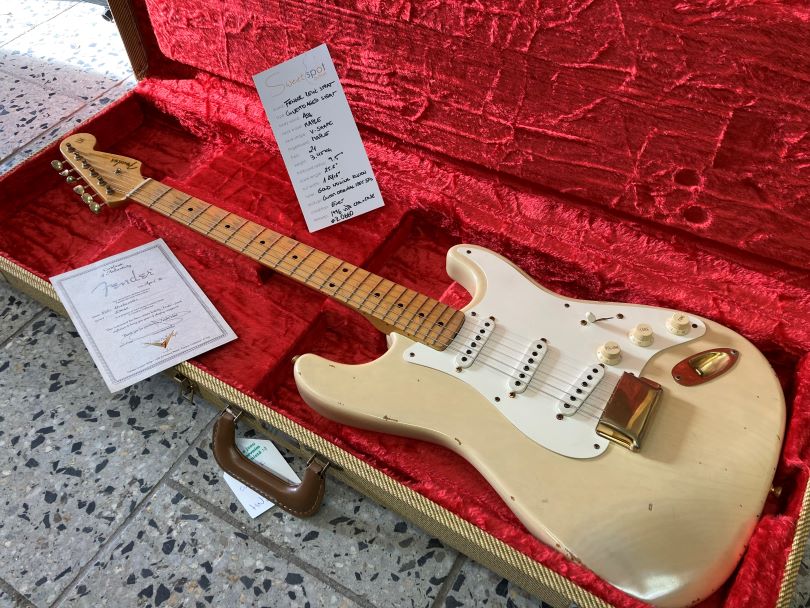
1995: The first Custom Shop relic guitars were introduced at NAMM
In 1995, Fender began producing relic guitars. The first two prototypes were a Nocaster and a Mary Kaye Stratocaster with gold hardware. These guitars immediately gained attention and the since then, the popularity of relic finishes and aged guitars has been on the. In the early years, everything was associated mostly with the name Vince Cunetto. Highly regarded relic guitars from this period are nicknamed the Cunetto era.
1995: Fender bought the Guild brand
The move was welcomed by both the management and staff of the Guild brand. Under the leadership of Bill Schultz, Fender committed to investing in this traditional brand and continuing to produce good-quality guitars and build close relationships with the professional players who played Guild guitars.
1998: Fender was producing 50,000 guitars a year
1998: Opening of a modern manufacturing facility in Corona
In 1998, the main event was the opening of a modern manufacturing plant in Corona, USA. The complex covered 19 acres.
The modern era after 2000
2004: Anniversary model of the Stratocaster
2004 marked the 50th anniversary of the Stratocaster's launch, so Fender came up with an anniversary model to pay tribute to the electric guitar icon.
2005: William Schultz retired
William Schultz became the face of Fender's modern evolution, along with Dan Smith. In 1985, he led the group of people who bought Fender from CBS. After that, he was involved in many projects and innovations.
2006: William Schultz died
2007: The most important people in Fender's history were acknowledged
Leo Fender, Don Randall and William Schultz and other key employees were inducted into the Fender Hall Of Fame.
2009: George Fullerton died
After Leo Fender, George Fullerton was one of the key people involved in the development and evolution of the brand. He was an active consultant at Fender until his death.
2011: Mexican factory began producing Road Worn guitars
Officially in 2011, but actually a couple of years earlier, an idea was born for relic guitar to be produced in Ensenada, Mexico. And from 2011, a whole series called Ensenada Road Worn Strats And Teles was made here – Stratocasters and Telecasters with a paint treatment that made them look played and tarnished from travelling and gigging, but not too battered. This series was a great success.
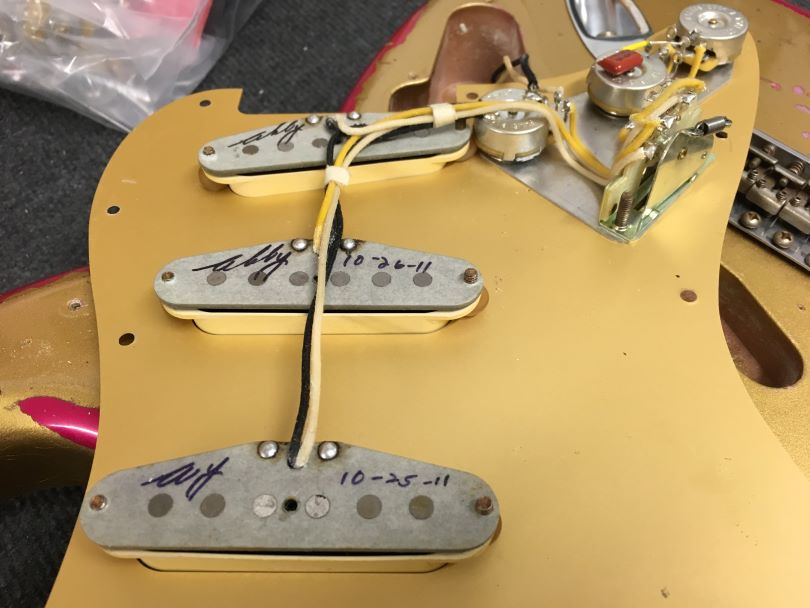
2013: Abigail Ybarra retired
After fifty-seven years, the legendary Abby Ybarra, a woman who became known for making pickups that are still highly sought after and valued today, retired from her work at Fender. She had worked there since 1956. Josefina Campos took over from her in the manufacture of pickups.
2014: Fender sold the Guild brand
After several years Fender decided to sell the Guild brand. He found a buyer in the Cordoba Music Group, which wanted to continue the tradition of producing high-quality guitars.
2015: Fender Digital Project
Recognising the rise of modern communication technologies, Fender came up with the Fender Digital concept. The company addressed the fact that 90% of musicians quit playing in the first year. One of the reasons was that players found it difficult to learn their favourite songs and gave up. Fender aimed to use modern technology to develop apps for beginners that would allow them to overcome this first hurdle and become advanced players. For example, there was a plan to develop tablature apps, smart tuners and connect musicians around the world.
For example, there was an idea that the increasingly popular musician Taylor Swift would motivate fans to play the Stratocaster. Fender realised this broad base of fans who would also become its customers. With the new apps, Fender wanted to keep these players playing and make it easier for them to learn how to play their favourite songs by this musician.
Fender hired technology expert Ethan Kaplan to get the project off the ground.
2017: Fender Play
Two years after the launch of Fender Digital, Fender came up with the Fender Play concept. It was a fully digitised, simple system that allowed beginners to effectively learn to play not only the guitar but also, for example, the bass, ukulele or banjo. In the app, musicians could find thousands of instructional videos, tutorials, tablatures and specialised lessons, allowing them to progress efficiently. Over time, almost all smartphone users could use this system.
And since it was essential for the project management to work with user feedback, all aspects have been gradually improved and adapted to the needs of both beginners and advanced users. It's a very simple, comprehensive and effective way to really learn how to play well from the comfort of your home.
2020: Fender stopped using ash wood for mass production
To ensure a sustainable supply of the popular ash wood, and due to its incipient scarcity, Fender management decided to stop using ash for mass production. The wood continues to be used for limited editions or special models, but unfortunately, it will no longer be found on regular guitars.
What will the next few years bring for Fender? Perhaps we will take a look at that after some time.
If you have found an error or typo in the article, please let us know by e-mail info@insounder.org.


